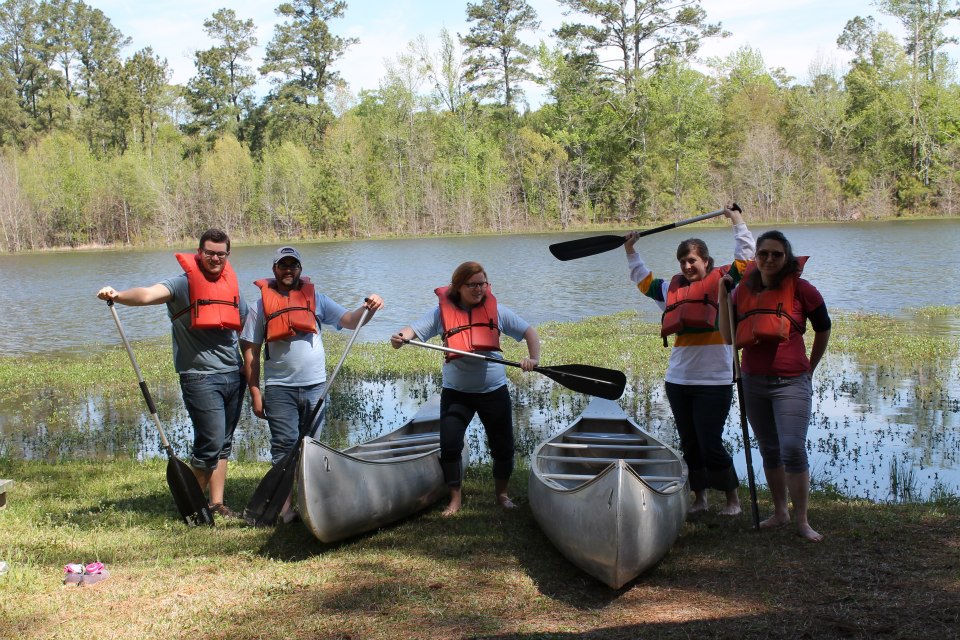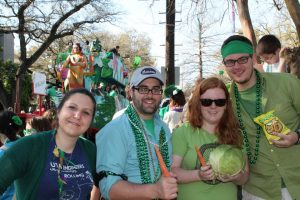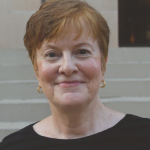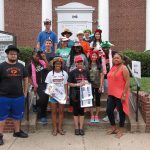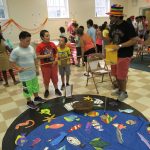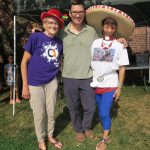Ephesians 6:10-17
David A. Davis
October 23, 2016
Just before Cathy and I were married thirty years ago, the congregation gave us a wedding shower one Sunday after worship. I started as pastor there in Blackwood on July 1. We were married on August 2. One Sunday in July in the Fellowship Hall during coffee hour they surprised us with a wedding shower for the both of us. The men of the church gave me gifts and the women of the church gave Cathy gifts. Yes, it was an unapologetic nod to gender role stereotypes. Cathy’s gifts were all kitchen related. The men gave me tools. Lots of tools. Not all of them were new tools. That’s a big deal, for a guy to give you one of his tools. Some of the tools, I didn’t even know what they were. But we were just starting out, just starting life together, and the folks knew I was going to need some tools. I still have those tools and the toolboxes they gave me. Both of our children have started out now in new seasons of life. First apartment. Getting settled. Almost immediately, from us and the parents of roommates they have enough plates to feed a baseball team (which would never fit in their apartment). And we gave them a small toolbox. When you’re just starting out, you need a toolbox.
It has been suggested that the end of Ephesians has the rhetorical flair of a baptismal sermon. Here at the end of chapter six, the Apostle Paul is tacking on the exhortation, part of the oration, a section of the sermon given at the time of baptism. With the newly baptized drying off, the congregation gathered, when joy is in the air: “Be strong in the Lord and the strength of God’s power!” When the baptismal garment is still fresh: “Put on the whole armor of God so that you may stand against the wiles of the devil.” With those new to the faith front and center and their now fellow citizens of the household of God gathered around: “For our struggle is not against enemies of blood and flesh, but against the rulers, against the authorities, against the cosmic powers of this present darkness.” A word for those just starting out. The belt of truth. The breastplate of righteousness. Shoes that proclaim the gospel of peace. The shield of faith. The helmet of salvation. The words of the Spirit, which is the word of God. Fasten. Put on. Take up. For those just starting out. Truth. Righteousness. Peace. Faith. Salvation. Word of God. A toolbox for life in Christ.
Of course for Paul, it’s not a toolbox. It’s the armor of battle. I have shared with you before that New Testament commentators, weekly preachers, and devotional writers spend quite a bit of time with the armor metaphor. There is the one that suggested providing a labeled sketch in the worship bulletin of a Roman soldier all decked out in battle attire. Another catalogued the armor with such detail that it seemed important to note which part of the armor Paul left out (something to do with shins). Many have pointed out that all of the armor pieces are defensive except for the sword, and the sword is the Word of God. Defensive rather than aggressive or violent. Folks work really hard to make all the military gear more palatable to the gospel.
One of my own reactions when it comes to gun violence, and the horrifying statistics about teens and children and gun violence, is to be more aware of the use of language. I am trying to not use the term “bullet points” when referring to talking points on the page. When we move ahead on an idea or a program around here I am not going to say “it’s time to pull the trigger.” I’m not going describe a sporting event as a war, or a battle, or a bloodbath. Yes, maybe it’s all kind of silly. But I also never imagined having to arrange “active shooter training” for the church staff I work with. The words, language, and images we use are worth paying attention to. So, yes, speaking only for myself, I don’t find a biblical dissection of body armor to be all that meaningful when it comes to truth and righteousness and peace and faith and salvation and Word of God. When it comes to a toolbox for life in Christ.
To be clear, an aversion to arming the language of faith in no way minimizes the reality of the struggle or denies the existence of worldly powers that seek to pull us away from God. Whether one calls it the wiles of the devil or the spiritual forces of evil or the cosmic powers of this present darkness, or the magnitude of institutional sin or the impact of total depravity or the ugly underbelly of the human condition that never goes away, there is a reality to that which eats away at your attempt to lead the Christian life and works against the in-breaking of the kingdom of God pretty much every day. And it can make life, the Christian life, difficult some times. That kind of experience is less about defining it, labeling it, and more about acknowledging it, experiencing it.
John Calvin has this great quote from his Institutes of the Christian Religion as he is trying to define the real presence of Christ in the Lord’s Supper. “Now if anyone should ask me how this takes place, I shall not be ashamed to confess that it is a secret too lofty for either my mind to comprehend or my words to declare. And to speak more plainly, I rather experience than understand it.” That’s Calvin on the mystery of God’s grace at the Table, Christ’s presence at the Table, something holy, something godly. Well, the same logic goes for the struggle, the worldly challenge, the powers and principalities that you know try to tear you away from a life in Christ. We shall not be ashamed to confess that we can’t wrap our minds around it. We may not have the words to describe it. We experience it rather than understand it. It’s what the Paul calls “our struggle.”
Truth, righteousness, peace, faith, salvation, Word of God. The toolbox is not just for those starting out. It’s there for our struggle. Paul’s final exhortation to the Ephesians begins with “Be strong in the Lord and in the strength of God’s power.” Be strong. It may be better translated as “Be made strong in the Lord” or “Keep being made strong in the Lord.” The verb in Greek is imperative and passive. Strength be done to you. It’s not your own strength. It’s the strength of the Lord. Or as one translation puts it: “Be strengthened by the Lord and the Lord’s powerful strength.” It’s similar to what Paul writes to Timothy in II Timothy: “You then, my child, be strong in the grace that is in Christ Jesus.” Imperative. Passive. Better translated, “Take strength from the grace of Christ” or “Draw your strength from the grace of Christ.”
You see the difference. It’s not just parsing words here. The words, language, and images we use are worth paying attention to. The strength Paul’s talking about here belongs to Christ. The strength is not yours, it’s his. This isn’t Paul standing before the newly baptized and proclaiming, “Be strong, hike up your britches, pull up your bootstraps, buck up, suck it up!” It is Paul telling the baptized that the strength of Christ is theirs for the journey. “I pray that, according to the riches of God’s glory, God may grant that you may be strengthened in your inner being with power through God’s Spirit” (Eph 3:16). It is Paul telling the newly baptized and the citizens in the household of God and the church, and you and me… when this all gets really difficult (and it will), know that the strength of Jesus Christ is for you. God’s strength. God’s power is there for you, for the struggle. “The immeasurable greatness of God’s power for us who believe… God put this [same] power to work in Christ when God raised him from the dead and seated him at his right hand in the heavenly places” (Eph1:19-20). It’s that kind of strength. “Keep being made strong in the Lord.”
A really long time ago I was sitting with someone in my office whose heart was just broken with grief. The person’s spouse had died months before and it wasn’t getting any easier. The struggle. Through some laughter and tears, the person said to me, “If you tell me I just have to take it one day at a time, I am going to punch you in the nose.” So I didn’t say that. We talked about how really hard it was. The struggle. At this point the memory of that visit in my office morphs into a collage of all the similar conversations I have had over the years. Time and time again I have seen people draw on a strength they never knew they had. It’s his strength. Not ours.
I can’t explain it, but I sure have seen it, and I bet you have too. Yes amid grief, but in so many other ways. Caring for a spouse whose mind won’t come back. Figuring out life with a new baby and no sleep. Stepping through the muck of a lost job. There is this strength. Walking into an AA meeting for the first time. Discovering how lonely a crowded campus can be. Juggling the needs of aging parents far away and the needs of the young children at your feet. Finding a way when the marriage ends. The strength isn’t yours, it’s his. Wondering if a job after college will ever come. Wading into a season of more questions than answers, more doubts than assurances, longing to know once again a peace within that passes all understanding, realizing one day that money wasn’t the answer or maybe the promotion wasn’t worth it, figuring out a bit too late that the world can be pretty nasty, discovering one day that maybe you can’t do it all by yourself. It’s our struggle and there’s this strength. I’ve seen it… at work… in you. “Keep being made strong in the Lord.”
A word for those just starting out. A word for all of us. Truth. Righteousness. Peace. Faith. Salvation. Word of God. When this all gets really difficult (and it will), know that the strength of Jesus Christ is for you. God’s strength. God’s power is there for you.
© 2016 Nassau Presbyterian Church
Contact the church to obtain reprint permission.

